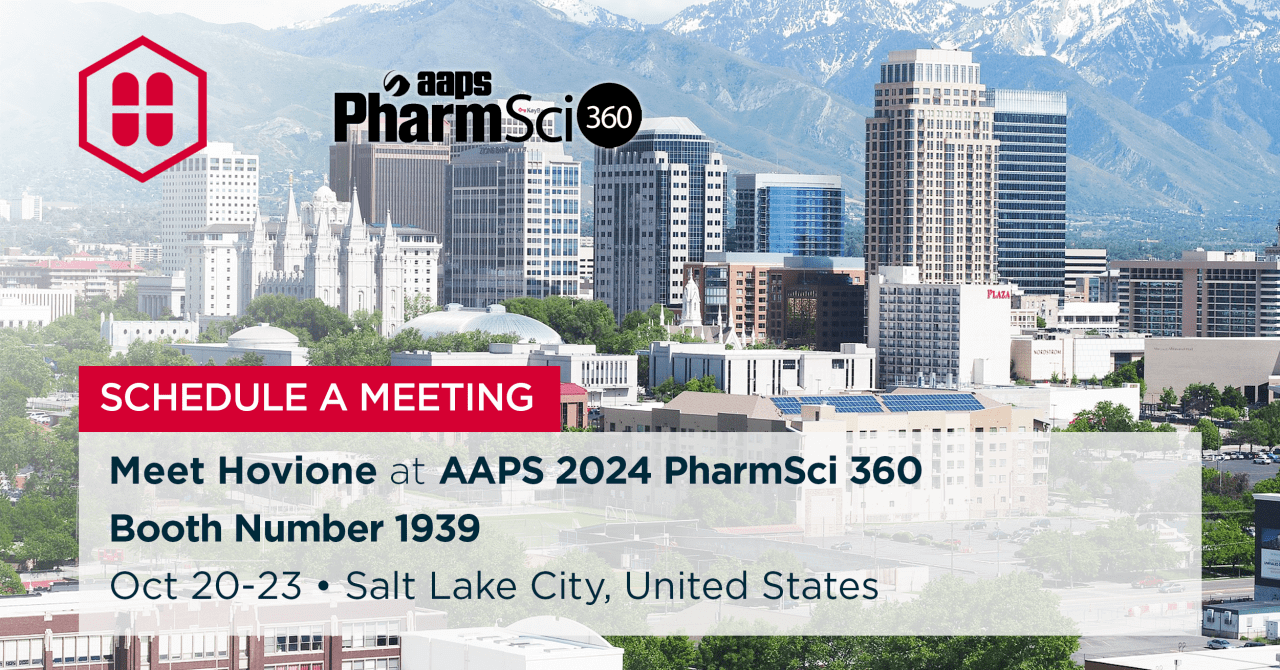Visit Hovione’s booth at AAPS PharmSci 360 next October 20-23 in Salt Lake City and meet our team of experts.
The AAPS PharmSci 360 Annual Meeting is organized by the American Association of Pharmaceutical Scientists (AAPS). The event provides a platform for pharmaceutical scientists from academia, industry, government, and other institutions worldwide to exchange knowledge and discuss the latest advancements in the field.
Don't miss our experts' presentations in Salt Lake City
Oral Presentation, 155 FDevelopment of Spray Drying Processes Grounded on Innovative Approaches Short description: New BCS Class 2 drugs represent up to 70% of the pharmaceutical pipeline. Limited aqueous solubility has been one of the major hurdles in the development of oral-dosage forms, as poor solubility hinders oral bioavailability. Different formulation strategies and enabling technologies have been used to overcome low aqueous solubility, including complexation with other compounds, nano-milling and amorphous solid dispersions (ASD). The selection of the most suitable method depends on the nature of the API and the SD has been unanimously recognized as the leading technology due to not only the mild processing conditions but also due to scalability, commercial scale representative ASD material can be produced in laboratorial scale and kept across scales. (full description) Key learnings:
|
Rapid Fire Presentation, 155 EStreamlining Loss-in-Weight Feeding Process Development Using Predictive Tools Short description: Continuous Direct Compression (CDC) has gained increased attention due to its advantages over batch processing. In CDC, each material is individually fed into the system at a predefined rate via loss-in-weight feeders, making it essential to understand their behavior during processing. This study aimed to predict the feeding performance and ideal setup for a new material, based on material properties. This was achieved by correlating material properties and feeder setup with feeding performance. A wide range of materials, including excipients, APIs, and spray-dried excipients, were physically and rheologically characterized, and their feeding performance evaluated. Results indicate that feeding performance is predominantly influenced by variables related to density, cohesion, and flowability, which can be obtained by performing three characterization analyses. In turn, these properties determine how different setup options influence feeding behavior. This workflow allows a data-driven approach, significantly reducing the time and material spent on process development. Key learning: In this presentation, attendees will explore the potential of using predictive strategies to develop and optimize a loss-in-weight feeding process for continuous tableting using minimum analytical and rheological characterization. |
Join Hovione at our poster presentations
|
Dispersome® as an Advanced Platform for Oral Bioenhancement Monday, October 21 | 12:30 PM – 1:30 PM |
|
Improving Lipid Nanoparticles Stability for mRNA Lung Delivery Through Nebulization Tuesday, October 22 | 9:30 AM – 10:30 AM |
|
Natural-Based ASD Platforms: Enhancing Stability and Bioavailability Tuesday, October 22 | 9:30 AM – 10:30 AM |
|
Protein Stabilization Sweet Spot: Novel Class of Sugar-Based Excipients Enabling Downstream Processing and Formulation Tuesday, October 22 | 12:30 PM – 1:30 PM |
Let’s discuss your project together.

Find more about AAPS PharmSci 360
| You might be interested in: |
|---|
Drug Substance at Hovione
Your partner in custom development and manufacturing of APIs.
The Leader in Spray Drying
Know how to overcome your solubility issues with the best scale-up science.
The Future is Continuous
Meet our experts and find out if Continuous Tableting is right for your product.
Industrialization of Innovative Platforms
Learn more about our Large-scale GMP-compliant platforms that support your project from development to commercialization.


